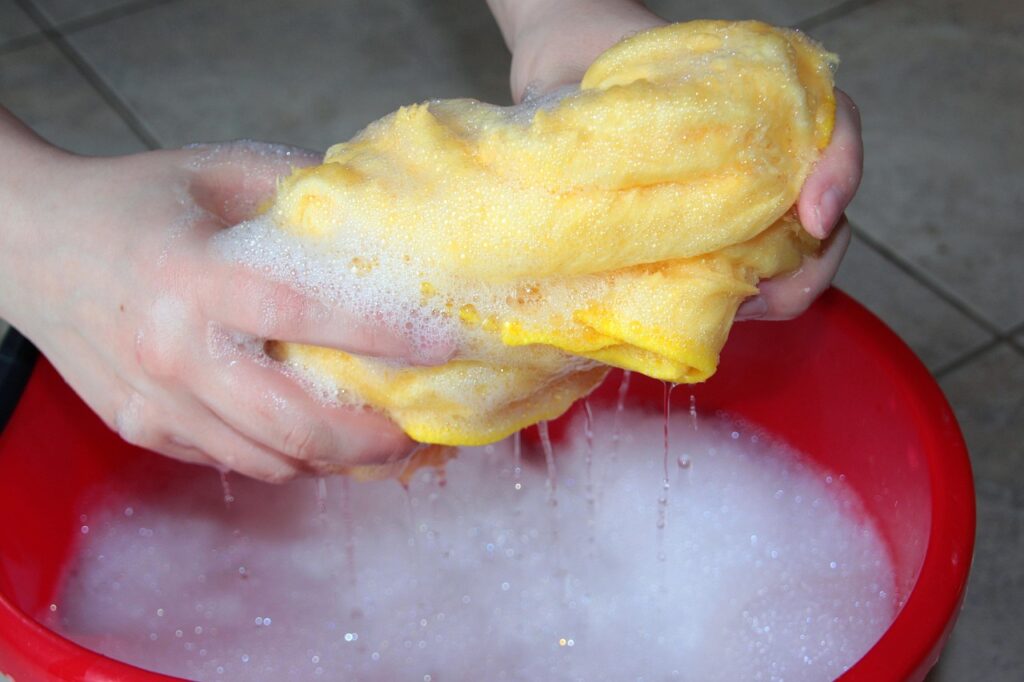Whether you like it or not, a garage often becomes a catchall storage area for tools, sports equipment, holiday decorations, and random household overflow. Over time, this space can become cluttered and grimy.
Giving your garage a deep cleaning not only restores order but also makes it a safer and more enjoyable place to work or store items. Deep cleaning can seem overwhelming, but it becomes manageable when broken down into thoughtful steps.
Assess the State of Your Garage
Before diving into the actual cleaning, take some time to assess the current condition of your garage. Look around and observe the level of dirt, clutter, and damage. Some garages are dusty with cobwebs, while others might have oil stains, rusted shelves, or boxes piled to the ceiling. Knowing what you are up against will help you create a realistic plan for cleaning and organizing.
Walk through your garage and make mental notes of the problem areas. Look for signs of mold, pest infestations, or water damage. Pay attention to corners, behind shelving units, and under your car. These areas are often overlooked but tend to harbor the most grime and debris. A thorough assessment will help you prioritize which sections to tackle first and what cleaning supplies you will need.
Once you have a good understanding of your garage’s condition, you can begin preparing for a deep clean. Choose a day with good weather if possible, especially if you plan to move items outside during the process. Opening windows and garage doors will improve airflow and make the entire project more pleasant.
Remove Everything from the Garage
Clearing out the garage may be the most time-consuming part of the job, but it is absolutely necessary for a thorough clean. You cannot scrub behind or beneath things that are in the way. Begin the process by moving everything out onto your driveway or yard. This includes boxes, furniture, tools, bins, bikes, and machinery. Even large items such as shelving units should be removed if possible.
As you take things out, start separating them into categories. Create piles for items you plan to keep, things that can be donated, and items that need to be thrown away. This is a perfect opportunity to declutter and be honest about what you really need. Many people discover that they are holding onto broken tools, outdated equipment, or half-empty paint cans that no longer serve a purpose.
Once the garage is empty, you will have a blank slate to work with. This also allows you to access areas that have not been cleaned in years. You might be surprised by what you find behind those old boxes or under the workbench. With everything out of the way, you can now focus on deep cleaning every inch of the space.
Clean from Top to Bottom
Begin your cleaning process at the highest points and work your way down. Start with the ceiling, which might be covered in dust, cobwebs, or even rodent droppings. Use a long-handled duster or vacuum with an extension attachment to clear these areas. Check the garage door opener mechanism and lighting fixtures as well. These areas often collect layers of dust over time.
Next, turn your attention to the walls. Wipe them down using a damp sponge or cloth with a mild cleaning solution. If you see mold or mildew, use a product designed to kill spores and prevent regrowth. This is also a good time to inspect your walls for cracks or signs of water intrusion. Address any damage before continuing with the cleaning process.
Finally, clean the floors thoroughly. Begin by sweeping to remove loose dirt and debris. Then scrub the floor using a heavy-duty degreaser and a stiff-bristled brush or mop. Pay special attention to oil stains, paint drips, and any other stubborn spots. Rinse the floor with clean water, and allow it to dry completely before moving on.
Inspect and Maintain Storage Systems
Most garages use a combination of shelves, cabinets, pegboards, and bins for storage. During your deep clean, inspect each of these systems to ensure they are still safe and functional. Shelves may need to be wiped down, tightened, or reinforced. Cabinets can collect dust and may have warped doors or hinges that need oiling.
Take all bins and containers and clean them before putting them back in use. Clear plastic bins are helpful for visibility, but they can become cloudy or cracked. Replace damaged bins to maintain a tidy and safe storage system. Label each bin clearly so you can find items easily in the future.
Pegboards are an efficient way to store tools, but they can become dusty and disorganized. Remove all tools, wipe down the board, and reorganize based on frequency of use. Hooks and holders can be adjusted or replaced to better suit your needs. A well-maintained storage system is key to keeping your garage clean over the long term.
Clean Tools and Equipment
While your garage is empty, take the opportunity to clean and inspect your tools and equipment. Power tools should be wiped down and checked for frayed cords, missing parts, or rust. Hand tools can be cleaned with soapy water and dried thoroughly to prevent corrosion. Lawn equipment and outdoor tools may require a more intensive clean, especially if they are covered in dirt, grass clippings, or oil.
Check your garden hoses for leaks or cracks, and inspect nozzles to ensure they function properly. For battery-powered tools or machines, check the charge and condition of batteries. Remove fuel from gas-powered tools if they will be stored for a long time. Keeping your equipment in good condition will make it last longer and reduce safety risks.
Organizing your tools after cleaning is just as important as the cleaning itself. Keep similar items grouped together and store frequently used tools in easily accessible spots. This reduces clutter and prevents the common problem of buying replacements for tools you already own but cannot find.
Wash Windows and Ventilation Openings
Many garages have small windows or ventilation grates that allow light and airflow. These areas are often ignored during regular cleaning and can accumulate layers of dust and grime. Take the time to clean your windows inside and out using a glass cleaner and lint-free cloth. If screens are present, remove and wash them with water and a mild detergent.
Ventilation openings should also be cleaned and inspected. Use a brush or vacuum to clear out cobwebs, dirt, and debris. Proper ventilation is essential for maintaining air quality in your garage, especially if you store chemicals or use it as a workshop. Clean vents improve airflow and reduce the chances of mold and mildew developing.
Cleaning these small features might seem minor, but they contribute to the overall brightness and cleanliness of your garage. Clean windows allow more natural light in, which can make the space feel larger and more welcoming.
Reorganize and Return Items
Once everything is clean, it is time to move items back into the garage in a more organized and thoughtful way. Return only the items you decided to keep. Place them in appropriate storage systems that allow for easy access and clear visibility. Keep seasonal or rarely used items higher up or in harder-to-reach areas, while frequently used tools and supplies should be within arm’s reach.
Take care when returning items to prevent clutter from building up again. Avoid tossing everything back in randomly. Use labeled bins, shelves, and hooks to create a system that you and your family can maintain over time. The goal is not only to clean but also to create a space that stays clean and efficient.
This reorganization is the final step that ties the whole process together. It rewards your hard work with a usable space that functions well for your specific needs. Whether you use your garage as a workshop, storage area, or fitness zone, a clean and organized layout enhances every activity.
Address Pest Control and Safety Hazards
A deep clean is the perfect time to look for signs of pests and eliminate any safety hazards. Look for droppings, nests, or gnawed materials that could indicate rodents or insects. Seal cracks or openings in walls and doors that could allow them to enter. Consider using traps or natural deterrents if you suspect a problem.
Safety is just as important. Check that all electrical outlets are in good condition and that extension cords are not overloaded or frayed. Make sure chemicals and flammable substances are stored in proper containers away from sources of heat or flame. Install smoke detectors and carbon monoxide monitors if you do not already have them.
Your garage should be as safe and secure as the rest of your home. Regular inspections and a commitment to cleanliness will help you achieve and maintain a hazard-free environment. This adds peace of mind and extends the life of everything stored in the garage.
Establish a Maintenance Routine
Once you have deep cleaned your garage, establish a simple routine to keep it from falling back into disarray. Regular sweeping, monthly organizing, and seasonal inspections can make a huge difference. Keep a checklist of tasks that need to be done periodically and assign responsibilities if multiple people use the garage.
Spending ten minutes a week on upkeep will save you hours of work down the line. Make it a habit to return items to their proper place after using them. Address spills or messes immediately to prevent permanent stains. Quick maintenance is much easier than repeated deep cleans.
Building a routine around cleanliness helps extend the results of your efforts and maintains a pleasant environment for working, storing, or relaxing. The garage becomes an extension of your home rather than a forgotten storage zone.
Conclusion
A deep cleaning of your garage might seem daunting at first, but it brings long-lasting benefits. The process gives you a chance to declutter, maintain your tools, improve safety, and transform your space into a more functional and enjoyable area. From assessing the mess to scrubbing the floors, each step brings you closer to a more organized and efficient environment.
The key to success is starting with a clear plan, taking one task at a time, and following through with regular maintenance. A clean garage does not just look better. It works better for your lifestyle. It makes projects easier, finds tools faster, and protects your belongings.
Once you have experienced the satisfaction of a freshly cleaned and organized garage, you might be inspired to apply the same care to other areas of your home. Deep cleaning brings a sense of accomplishment and control that enhances daily life. Now is a great time to roll up your sleeves and give your garage the deep clean it deserves.

